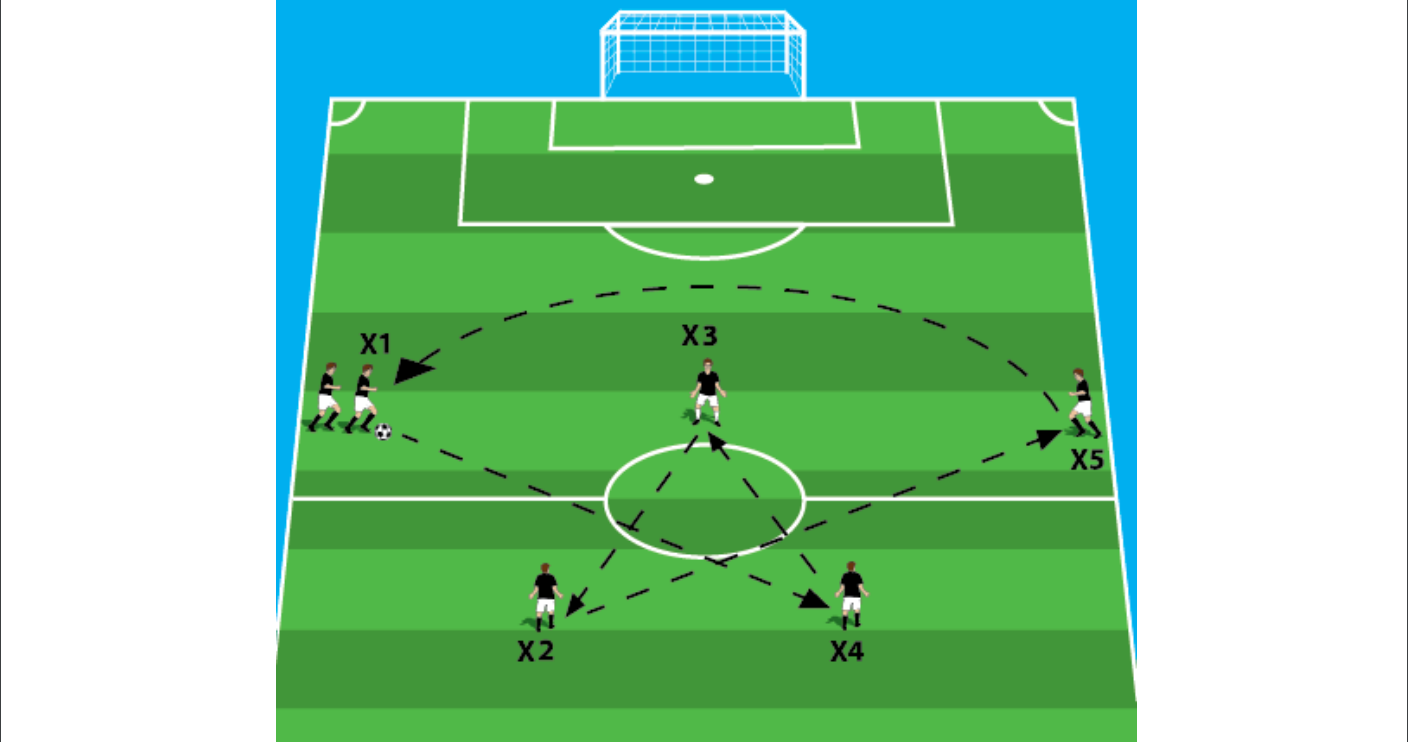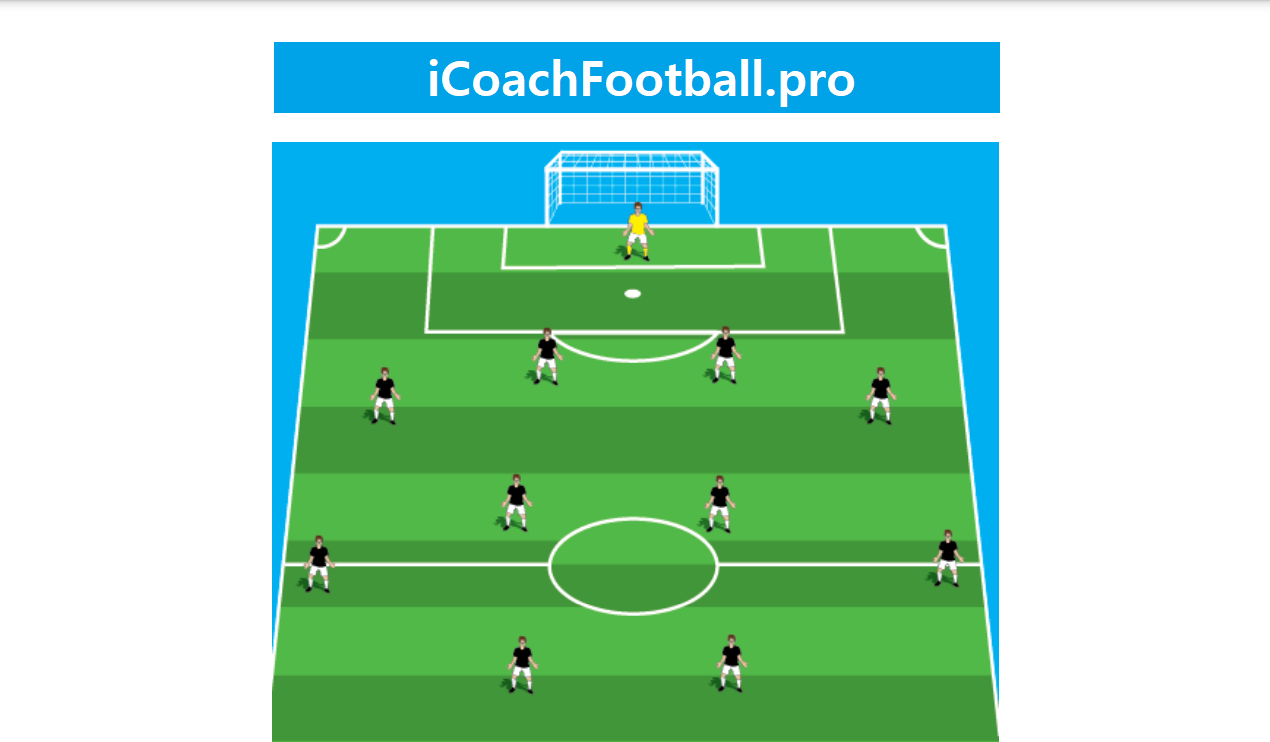[tableon id=1]
This book will focus on 3-Dimensional Training PDF and the incorporation of training sessions for different formations. It will focus on four general formations (1-4-4-2, 1-4-3-3, 1-3-5-2, and 1-4-2-3-1). There are many variations of these systems, but I will use only one structure for each system.
They are meant to help you think on a different level and to help you examine your training to see how it fits within this type of model. You may play one of the systems above in a different way, and I hope that you are able to use the examples in each to help you with your philosophy and approach with your teams. It will help you to think and develop teams the 3- Dimensional Way!
Introduction
Where we break down with our coaches is on the technical side of player development. Coaches want to rush through the technique and get into the tactical game as soon as possible. We even see this at the younger ages where coaches focus more on players getting wide and deep than on touch and control.
I see this trend across the country as well on youth and high school fields everywhere. The trend is that we want to rush through a proper warm-up that prepares players and get to the good stuff; the tactical part of the game. Let’s play small-sided soccer or even get to the game itself.
I also hear that same statement from every coach, “Okay, that’s good enough. Let’s move on.” The problem is that technique must be PERFECT and can never be GOOD ENOUGH! We can get immediate short-term results by focusing on tactics. It is an instant reward for the coaches and the clubs.
In order to incorporate a training philosophy such as 3-Dimensional Training, you must have four elements included in your approach to training.
(Progressive Training, Specified Training, Positional Training, and Systems of Play).

1. Progressive Training
You must have the ability to connect your training goals into every aspect of your training. If your focus in the game is to play into a central target and you accomplish this with short succinct passes, then your session at its very core must include every aspect of this. This means your warm-up must begin to emphasize your approach, and it must continue through every exercise and drill. Your instruction must be very focused and detailed towards your philosophy in the game.
It is not enough to just pass the ball, you must structure your session so that you are emphasizing your approach in the game. This does not mean that you have to change your drills, you just need to make sure your focus is structured so that the information you are providing to the players always ties in your objectives on a larger scale. Paint the picture clearly at each stage and be sure to relate what you are doing as much as possible to the game itself.
2. Specified Training
Exercises and drills need to be very specific. They must connect with your philosophy but, more importantly, they must link together naturally so that there is a consistent flow in your session. If you begin with a simple passing exercise emphasizing to the players to pass the ball from right foot to right foot at a distance of 6-8 yards, then your next progression needs to build on this keeping the same thought process.
It may be that your next step is to build to 5v2 in a 20×30 yard grid using a central option. Your passes in this grid need to be targeted (i.e. to the right or left foot), but they must also be crisp passes that are 6-8 yards on average. Maybe you had the players in the first passing drill work on checking away 2-3 steps before coming back to receive the ball.
You might incorporate this into the smallsided game by working with the central player to check at angles to receive the ball while also opening the longer pass forward. This all would begin to tie in your philosophy that you are looking to play into your central options when they are available. You must emphasize this philosophy even at the very basic level of just passing the ball to a partner. Players will get it and begin to understand the game on a different level.
3. Positional Training
It is important as you advance through your session that you structure your exercises to relate to how you play. For example, if you were playing 7v7 and wanted to play a 4-4-2 system, then you wouldn’t play in a 3-1-3 formation as this simulates a 4-3-3. Breaking it down even further, go back to that basic passing drill of two and a ball passing and moving.
I would have attacking players and central midfield players work on checking away then back to the ball, but I would include having them receive and turn quickly as if to prepare to take on an opponent or to look for that important central option. With the defenders I would work with them on turning the ball with the outside of their foot, but I would make sure that the players are taking that look over their shoulders to scout for pressure from an opponent.
You can also build in defensive responsibilities when the two defenders win the ball. When they win the ball have them try to dribble out. The five possession players must come in and pressure the players away from the line and win the ball back as quickly as they can, then re-gain their shape in possession (width and depth).
4. Systems of Play
You always want to paint the big picture at every level of your session. Be sensitive to how you want to play when constructing your sessions. I believe that a session is something you take time and care in constructing. I have the luxury of coaching in college and being able to determine long before the season begins how I want to play.
Most college programs, especially the ones that are very successful, know what system and the philosophy they will use to approach every game. I always plan out my pre-season training sessions 1-2 months in advance of my season. This usually represents all of the fitness sessions, classroom sessions, positional training sessions, and team training sessions.
All combined there are more than 50 sessions I plan long before the first player steps on campus. I know where the team will be when they step on campus and I know where I need them to be by the time we begin our season in September. From there it’s just a matter of covering everything I want or need to cover before we begin our season.
What is your game system formation ?
This is where I sit down and map everything out right down to the last exercise we will do before the start of the season. Some people would find this too structured for them. It works for me and it always focuses on how we play and the system we will follow. The philosophy is intertwined with every session and every exercise. You need to make sure that you tie in your system from the beginning.
Don’t wait to teach how you want to play until right before you play, that will leave gaps and create opportunities for your opponent. Weave it in with your sessions from the beginning. Don’t be afraid to tell the players that this is how we are going to play. It will help alleviate anxiety sometimes, especially for older and more talented players. As a warning, though, colleges have the luxury of determining what system they want to play before they step onto the field.
Youth and high school coaches don’t really have that luxury. Your system needs to be based on the personnel that you have. If you can recruit for the system you want to play, then this will obviously be an advantage for you. Never force a system into a team. The team needs to fit the system. There are several things to consider when deciding how to make your training more specific.
1) What is your philosophy as a coach?
This needs to be very specific. Most people will look at this and think that this is basic stuff, and this is not so. You have to understand several aspects of the game specific to your own thoughts. How do you want to attack? How do you want to defend? Do you want to play into certain options during the game (i.e. central forward or out wide)?
Will you look to get immediate pressure on the ball and close down spaces and options? Will you look to force them into certain spaces to make their attack predictable? These all need to be understood in order to be very clear when training, the foundation of 3-Dimensional Training.
2) Once you have your philosophy, how do you plan to implement it on the field?
Will you look to play direct? Indirect? Will you look to play passively, or aggressively? Do you want your team to play in zones (i.e. 3rds of the field)? Will you vary your approach in different areas of the field?
Understanding your philosophy is the first step, but you need to take it further by understanding how this will be implemented on the field. This is an important second step that most coaches never explore. Most coaches are wrapped up in their philosophy and never analyze the next step of how to implement it.
3) The third step is to look at the long-term.
Anyone can plan a good session and implement it. The art of coaching is being able to look at a season before it is played and understanding what needs to be taught over the course of the season. The next step is being able to plan everything so that you are teaching what needs to be taught over the course of the entire season.
The real challenge will be to stay the course. In other words, every season will have its ups and downs. Can you maintain focus and keep to your philosophy. This will be a real challenge as there are always doubters and there will always be temptations.
3-Dimensional Training PDF
[sociallocker]
[/sociallocker]
Now that you have a general understanding of what is needed to train on a higher level, the 3-Dimensional Way, you need to apply all of this to the system you will play.
